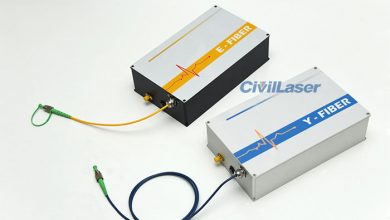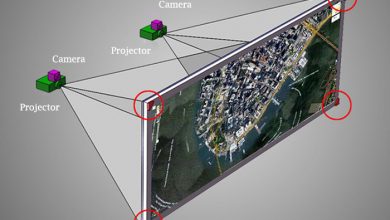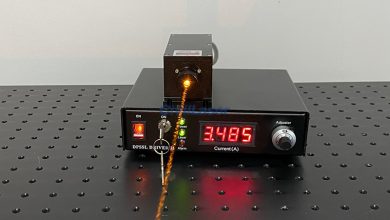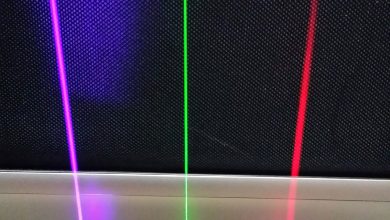Laser Article
Industrial Analysis of High Power Semiconductor Lasers

As efficiency and power continue to increase, laser diodes will continue to replace traditional technologies, changing the way things are made and contributing to new things.
Traditionally, economists believe that technological advancement is a gradual process. Recently, more emphasis has been placed on the role of some disruptive innovations. These innovations, known as General Technology (GPT), refer to “deep new ideas or technologies that have the potential to make a significant impact on many economic sectors.” Clear examples of GPT are steam engines, power and integrated circuits.
General-purpose technology usually takes decades to develop, and even longer can lead to productivity gains. These technologies are usually not well understood at first, and even after the commercialization of the technology, there are still long-term lags in production applications. Integrated circuits are a good case study. Although the transistor was first shown in the early 20th century, its widespread commercialization appeared later.
Moore predicted in the 1965 essay that semiconductors will develop rapidly, which will bring “the popularity of electronic technology and push this science to many new fields.” Although Moore’s predictions are bold and unexpectedly accurate, semiconductor technology It took decades of continuous improvement before achieving productivity and economic growth.
Similarly, the understanding of significant improvements in high power semiconductor lasers is limited. The conversion of electrons into lasers through semiconductors was first demonstrated in 1962, followed by a variety of complementary advances that have driven the tremendous advances in the conversion of electrons into high-productivity lasers. These advances have supported important applications from optical storage to optical networks to a wide range of industrial applications.
Reviewing these advances and accumulated progress highlights the potential for even greater and more widespread impacts in many sectors of the economy. In fact, with the continuous improvement of high-power semiconductor lasers, its application fields will accelerate and expand, and will have a profound impact on economic growth.
History of high power semiconductor lasers
On Sunday morning, September 16, 1962, the Robert Hall team at the GE Research Laboratory demonstrated the infrared emission of gallium arsenide (GaAs) semiconductors with a “strange” interference pattern indicating coherent lasers, the birth of the first semiconductor laser. . [3] Hall initially believed that semiconductor lasers “had little hope of success” because the LEDs at that time were very inefficient. He is also skeptical because the lasers that were shown two years ago require a “complex mirror.”
In the summer of 1962, Hall said that he was “shocked” by a paper that showed the much more efficient GaAs LEDs at the MIT Lincoln Laboratory. [3] He returned to General Electric, thinking that he was fortunate to have some good quality gallium arsenide materials for testing, and using his experience as an amateur astronomer, developed a way to polish the edges of GaAs chips. To form a resonant cavity.
Hall’s successful demonstration is based on his design, allowing radiation to be reflected back and forth in the plane of the junction, rather than perpendicular to it. He modestly stated that no one “had accidentally discovered this idea before.” In fact, Hall’s design is essentially a coincidence that the semiconductor material forming the waveguide also has the characteristic of limiting bipolar carriers at the same time. Otherwise, semiconductor lasers will not be possible. By using dissimilar semiconductor materials, a slab waveguide can be formed to overlap photons with carriers.
These preliminary demonstrations by General Electric are a major breakthrough. However, these lasers are far from being practical devices. In order to realize the prospect of high-power semiconductor lasers, fusion of different technologies must be realized. Key technological innovations began with advances in the understanding of direct bandgap semiconductor materials and crystal growth technologies.
Subsequent developments included the invention of double heterojunction lasers and the subsequent development of quantum well lasers. The key to further strengthening these core technologies lies in the improvement of efficiency and the development of surface passivation, heat dissipation and packaging technology.
The brilliance of semiconductor lasers
These innovations over the past few decades have brought amazing cumulative improvements. In particular, the improvement in brightness is particularly prominent. [6] In 1985, the most advanced high-power semiconductor lasers at that time were able to couple only 100 mW of power into a fiber with a core diameter of 105 μm. Now, the most advanced high-power semiconductor lasers can generate more than 250W of power and couple them into a fiber with a core diameter of 105μm, which is equivalent to a power increase of 10 times every eight years.
Moore speculates that “more electronic components will be accommodated on the integrated circuit board.” Subsequently, the number of transistors per chip is increased by 10 times every 7 years. Coincidentally, high-power semiconductor lasers have coupled more photons into the fiber at similar exponential rates (see the figure below).
img1:Comparison of brightness and Moore’s Law for high power semiconductor lasers.
The increase in brightness of high-power semiconductor lasers is the result of unpredictable technological advances. While new innovations are needed to continue this trend, there is reason to believe that innovation in semiconductor laser technology is far from coming to an end. As engineering continues to evolve, well-known physics can further enhance the performance of semiconductor lasers.
For example, quantum dot gain media is expected to significantly improve efficiency on current quantum well devices. Slow axis brightness offers another level of improvement potential. New packaging materials with improved heat dissipation and expansion matching will provide continuous power boost and enhanced enhancements required for thermal management. These key developments will support the roadmap for the development of high power semiconductor lasers for decades to come.
Diode-pumped solid-state lasers and fiber lasers
Advances in high-power semiconductor lasers have also led to the development of downstream laser technology, typically as a semiconductor laser for exciting (pumped) doped crystals (diode-pumped solid-state lasers) or doped fibers (fiber lasers).
While semiconductor lasers provide efficient, small, and low-cost laser energy, they also have two key limitations: they do not store energy and their brightness is limited. Basically, many applications require two types of lasers; one for converting power to laser emission and the other for enhancing the brightness of the emission.
Diode-pumped solid state laser. In the late 1980s, the use of semiconductor laser-pumped solid-state lasers began to gain great interest in the commercial world. Diode-pumped solid-state lasers (DPSSL) have greatly reduced the size and complexity of thermal management systems (primarily circulating coolers) and gain modules. Historically, gain modules have used arc lamps to pump solid-state laser crystals.
The wavelength of the semiconductor laser is selected based on the overlap with the spectral absorption characteristics of the solid state laser gain medium, which can significantly reduce the thermal load compared to the broadband emission spectrum of the arc lamp. Considering the popularity of cesium-doped lasers emitting 1064 nm wavelengths, 808 nm semiconductor lasers have become the largest output of semiconductor lasers in more than 20 years.
With the increased brightness of multimode semiconductor lasers and the ability to stabilize narrow emission linewidths using bulk Bragg gratings (VBG) in the first decade of this century, the second generation of improved diode pumping efficiency is achieved. The weaker and narrow spectral absorption characteristics around 880 nm have caused great interest in spectrally stable high-brightness pump diodes. These higher performance lasers make it possible to directly pump the upper laser level 4F3/2, which can reduce quantum losses, thereby improving the fundamental mode extraction at higher average powers, which would otherwise be limited by thermal lenses.
Early in the second decade of this century, we witnessed a significant power-up trend for single-transverse mode 1064 nm lasers and their frequency-converted lasers operating in the visible and ultraviolet bands. Due to the long upper energy lifetime of Nd:YAG and Nd:YVO4, these DPSSL Q-switched runs provide high pulse energy and high peak power, making them ideal for ablative material processing and high precision micromachining applications.
fiber-optic laser. Fiber lasers provide a cost-effective way to convert the brightness of high-power semiconductor lasers. Although wavelength multiplexing optics can convert relatively low brightness semiconductor lasers into brighter lasers, this comes at the expense of increased spectral width and optomechanical complexity. Fiber lasers have proven to be particularly effective in luminance conversion.
For example, compare the following best lasers: where ~5kW of 976nm pump power comes from 400μm and 0.46NA fibers (95mm-mrad beam quality), equivalent to 0.55W/(mm-mrad) pump brightness . The pump light is converted by a fiber laser to a ~4 kW 1064 nm beam, output from a 20 μm and 0.06 NA fiber with a brightness of 11,098 W/(mm-mrad). Fiber lasers offer brightness enhancements >20,000 times, or more than four orders of magnitude!
The double-clad fiber introduced in the 1990s, using a single-mode core surrounded by a multimode cladding, can effectively introduce higher power, lower cost multimode semiconductor pump lasers into the fiber, creating A more economical way to convert high power semiconductor lasers into brighter sources. For erbium-doped (Yb) fibers, the pump excites a broad absorption band centered at 915 nm, or a narrower absorption band around 976 nm. As the pump wavelength approaches the lasing wavelength of the fiber laser, so-called quantum losses are reduced, thereby maximizing efficiency and minimizing the amount of waste heat that needs to be dissipated.
Both fiber lasers and diode-pumped solid-state lasers rely on the increase in brightness of diode lasers. In general, as the brightness of diode lasers continues to advance, the power of the lasers they pump increases. Brightness improvements in semiconductor lasers tend to promote more efficient brightness conversion.
As we expect, spatial and spectral brightness will be necessary for future systems, which will enable low-quantum loss pumping of narrow-absorption features in solid-state lasers, as well as dense wavelength multiplexing schemes for direct semiconductor laser applications. may.
Market and application
Advances in high power semiconductor lasers have made many important applications possible. Since the cost per watt of high-power semiconductor lasers has been reduced exponentially, these lasers have replaced both old technologies and new product categories.
As cost and performance improve by more than 10 times per decade, high-power semiconductor lasers perturb the market in unpredictable ways. While it is difficult to accurately predict future applications, there are many implications for reviewing the possibilities of conceiving the next decade over the past three decades (see img 2).
img 2:The increase in brightness of high-power semiconductor lasers has enabled applications to expand.
1980s: Optical storage and initial niche applications. Optical storage is the first large-scale application of semiconductor lasers. Shortly after Hall first showed infrared semiconductor lasers, General Electric’s Nick Holonyak showed off the first visible red semiconductor laser. In the next two decades, compact discs (CDs) entered the market and launched the optical storage market.
The continued innovation of semiconductor laser technology has led to the development of optical storage, such as digital versatile discs (DVDs) and then Blu-ray discs (BDs). This is the largest market for semiconductor lasers, but the medium power levels typically limit some other applications to relatively small niche markets such as thermal printing, medical applications, and selected aerospace and defense applications.
The 1990s: The optical network prospered. In the 1990s, semiconductor lasers became the key to communication networks. Semiconductor lasers are used to transmit signals over fiber optic networks, but higher power single-mode pump lasers for optical amplifiers are critical to economically expanding optical networks and truly supporting data growth on the Internet.
Spectra Diode Labs (SDL), one of the first pioneers of high-power semiconductor lasers, is an example of the inundation of telecom foam. Founded in 1983, SDL was formed by a joint venture between Spectra-Physics and Xerox, and was launched in 1995 with a market capitalization of approximately $100 million. Five years later, SDL was acquired by JDSU for more than $40 billion during the peak of the telecommunications industry, one of the largest technology acquisitions in history. Soon after, the telecommunications industry shattered and destroyed trillions of dollars of capital. It seems that this may be the biggest bubble in history.
21st century: Laser as a tool. Although the telecommunications industry is very destructive, the large-scale investment in high-power semiconductor lasers has laid the foundation for its wider adoption. As performance and cost increase, these lasers are increasingly replacing traditional gas lasers or other energy conversion sources in a variety of processing applications.
Semiconductor-based lasers have become a tool commonly used in a wide range of applications. Its industrial applications range from traditional manufacturing processes such as cutting and soldering to new advanced manufacturing technologies such as additive manufacturing for 3D printed metal parts. Micro-manufacturing applications are even more diverse, as key products such as smartphones have become commercially viable through the precise power transfer of these lasers. Aerospace and defense applications cover a wide range of mission-critical applications and may include next-generation directed energy systems in the future.
The future of semiconductor lasers
More than 50 years ago, Moore did not propose a new basic law of physics, but pointed out the development law of integrated circuits that were first studied more than a decade ago. His predictions lasted for decades and achieved a series of subversive innovations that were unimaginable in 1965.
When Hall showed semiconductor lasers more than 50 years ago, he launched a technological revolution. Like Moore’s Law, no one can predict the brilliant achievements of high-power semiconductor lasers brought about by various innovations.
There is no fundamental law in physics to rule these improvements, but continued technological advances are likely to sustain this exponential development in glory. Semiconductor lasers will continue to replace traditional technologies and will further change the way things are manufactured. More important to economic growth is that high-power semiconductor lasers will also change what can be done.








